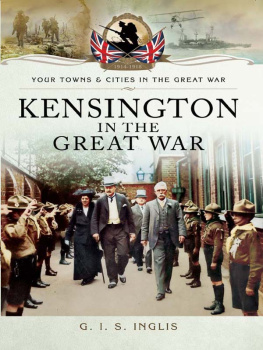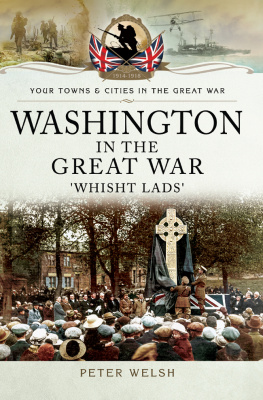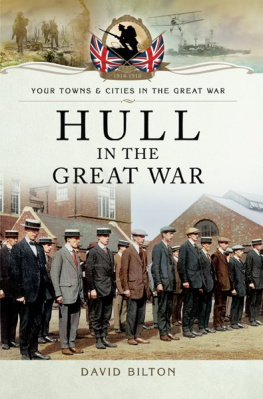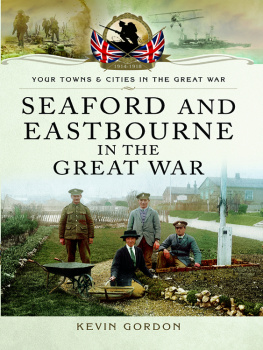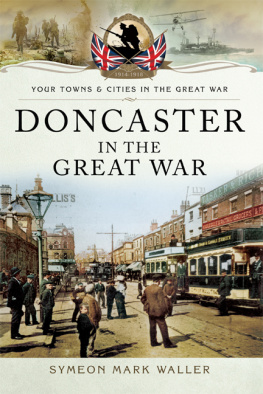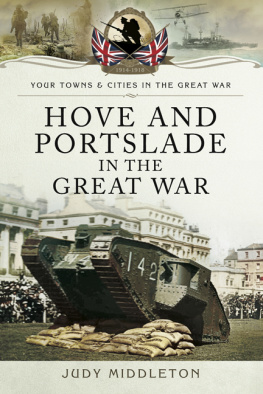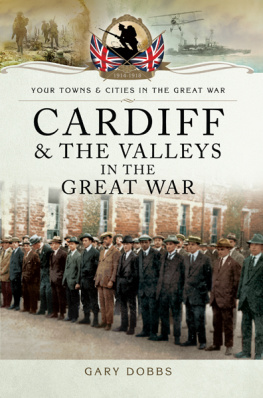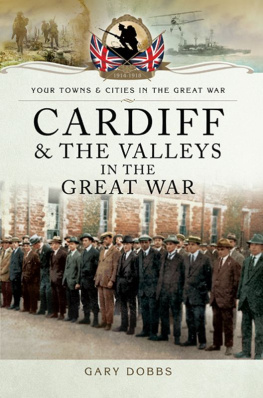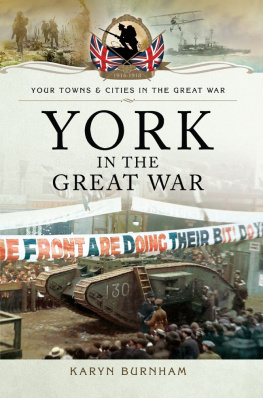
Your Towns and Cities in the Great War

Kensington
in the Great War
Your Towns and Cities in the Great War

Kensington
in the Great War
G.I.S. Inglis

Pen & Sword
MILITARY
First published in Great Britain in 2014 by
PEN & SWORD MILITARY
an imprint of
Pen and Sword Books Ltd
47 Church Street
Barnsley
South Yorkshire S70 2AS
Copyright G.I.S. Inglis, 2014
ISBN 978 1 78303 288 4
The right of G.I.S. Inglis to be identified as the author of thiswork has been asserted by him in accordance with the Copyright,Designs and Patents Act 1988.
A CIP record for this book is available from the British Library
All rights reserved. No part of this book may be reproduced or transmitted in any form or by any means, electronic or mechanical including photocopying, recording or by any information storage and retrieval system, without permission from the Publisher in writing.
Printed and bound in England
by CPI Group (UK) Ltd, Croydon, CR0 4YY
Typeset in Times New Roman by Chic Graphics
Pen & Sword Books Ltd incorporates the imprints of
Pen & Sword Archaeology, Aviation, Battleground, Discovery,
Family History, History, Maritime, Military, Naval, Politics, Railways,
Select, Social History, Transport, True Crime, and Claymore Press,
Frontline Books, Leo Cooper, Praetorian Press, Remember When,
Seaforth Publishing and Wharncliffe.
For a complete list of Pen and Sword titles please contact
Pen and Sword Books Limited
47 Church Street, Barnsley, South Yorkshire, S70 2AS, England
E-mail:
Website: www.pen-and-sword.co.uk
Introduction

When one thinks of Kensington in 1914, one envisages broad streets and grand houses full of servants. Certainly the central and southern parts of the Royal Borough included plenty of these, as well as Kensington Palace and salubrious Kensington High Street, with its great emporia like Derry & Toms, Barkers of Kensington and Pontings. Despite all the evident wealth, there was considerable poverty, especially to the north in the Notting Dale and Kensal New Town areas, with overcrowded multi-occupied dwellings, while slums could be found hidden behind and even among the large houses.
Page from Walkers 1914 London street-map covering almost all of Kensington Borough, apart from the very south. The shapes at the extreme left of the map are the layouts of the White City exhibitions. (A)


Schematic Map of Kensington to show the main areas mentioned. (A)
One commentator said in 1903: Northward above Notting Hill is a very poor district, poor enough to rival many an East End parish. Thus the death rate for 1914 in Norland Ward (north) was 20 per 1000, over twice that in Brompton (south) at 9 per 1000. So looking at Kensington
I have used the approximate physical boundaries of the Royal Borough to represent Kensington, but what one might call mental borders are seldom precisely identical. Thus Kensington Gardens and the Albert Hall are quintessentially Kensington, but are in the Borough of Westminster.
The Borough has been described as a boot pointing to the right. At its top we have the huge Kensal Green cemetery, where famous Victorians such as Brunel, Thackeray and Trollope were buried. Starting at the top, we soon reach Kensal New Town, an area of particular over-crowding which used to be part of Chelsea until 1900. We move approximately south down the boot until we reach Notting Hill Gate (home of the Coronet theatre, with the giant William Whiteleys emporium just outside the boundary and another giant store, Selfridges, further on at the beginning of Oxford Street). Next we encounter Kensington Palace and its grounds, then the South Kensington museums (with most of Kensington Gardens plus the Albert Hall, Albert Memorial and the Imperial Institute on the wrong side of the borough boundary). At the tip of the toe we have Harrods huge department store. Travelling around to the heel (with the Borough of Chelsea as the sole) we go westwards to find Brompton Cemetery and round to Earls Court and its exhibitions area. As we travel up the back of the boot we border the Borough of Hammersmith most of the way. First we encounter another famous exhibition area, Olympia. Further north we graze Shepherds Bush, home of the popular Shepherds Bush Empire, and also the entrance to the White City exhibition area. Here the Franco-British Exhibition was held in 1908 to celebrate the Entente Cordiale between the two countries. Many of its white-painted buildings were still extant at the time of the 1914 exhibition, the Anglo-American Exposition, with its working model of the Panama Canal, the Grand Canyon Railway and a Wild West Show among the attractions. Further north we pass the open area of Wormwood Scrubs on our left, and move through North Kensington back to St Marys RC Cemetery (actually part of the Borough of Hammersmith) and the adjoining Kensal Green Cemetery.
The Shepherds Bush Empire, with its characteristic dome. (p-c, A)


The Anglo-American Exposition: The popular Indian Dance (101 Ranch).

The first and most famous of the White City exhibitions. (2008 Centenary Brochure)

The Anglo-American Exposition: to celebrate 100 years of peace between the countries. (WC)

Showing the crowds at the Anglo-American Exposition. (p-c, A)
Snippets from July 1914
The Dead End - flogging a dead horse. In July the Borough saw off yet another attempt by the London County Council to impose the hated tram upon Kensington. The terminus (The Dead End) would remain at Shepherds Bush Green:
Surely never since the dreadful days of the Steamboats fiasco has even the L.C.C. manifested a blinder crassness, a more headstrong persistence in kicking against the pricks, than in this attempt...to force its obsolete, obstructive tramway system upon portions of the Metropolis where it will be most unwelcome and unwanted..
Mrs Pankhurst carried off. Womens suffrage was one of the biggest issues of the day. The Womens Social and Political Union were the militant suffragettes, frequently in trouble with the police. The cycle would go: WSPU person does something outrageous, is arrested and sent to prison. There she goes on hunger strike. Using the new Cat and Mouse Act, the prison authorities release her before she becomes gravely ill. She recovers (often at Mrs Brackenburys house, nicknamed Mouse Castle at 2, Campden Hill Square), but once she recommences her militancy, she is arrested again and so on.
Next page
